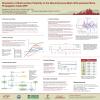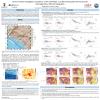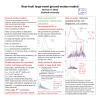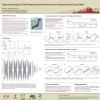Poster #200, Ground Motions
Ground Motion Simulations and Site Response Corrections for MW 7.0 Hayward Fault Earthquakes Resolved 0-10 Hz
Poster Image:

Poster Presentation
2020 SCEC Annual Meeting, Poster #200, SCEC Contribution #10772 VIEW PDF
om the United States Geological Survey (USGS) assuming a minimum shear wave speed, vSmin, of 500 m/s. We corrected motions for linear and nonlinear site response for the shear wave speed, vS, from the USGS 3D model using a recently developed ground motion model (GMM) for Fourier amplitude spectra (Bayless and Abrahamson, 2018; 2019a). At soft soil locations subjected to strong shaking, the site-corrected intensities reflect the competing effects of linear amplification by low vS material, reduction of stiffness during nonlinear deformation and damping of high frequencies. Sites with near-surface vS of 500 m/s or greater require no linear site correction but can experience amplitude reduction due to nonlinear response. Averaged over all sites, we obtained reasonable agreement with empirical ergodic median GMMs currently used for seismic hazard and design ground motions (epsilon less than 1), with marked improvement at soft sedimentary sites. At specific locations, the simulated shaking intensities show systematic differences from the GMMs that reveal path and site effects not captured in these ergodic models. Results indicate how next generation regional-scale earthquake simulations can provide higher spatial and frequency resolution while including effects of soft soils that are commonly ignored in scenario earthquake ground motion simulations.
SHOW MORE
SHOW MORE

















































